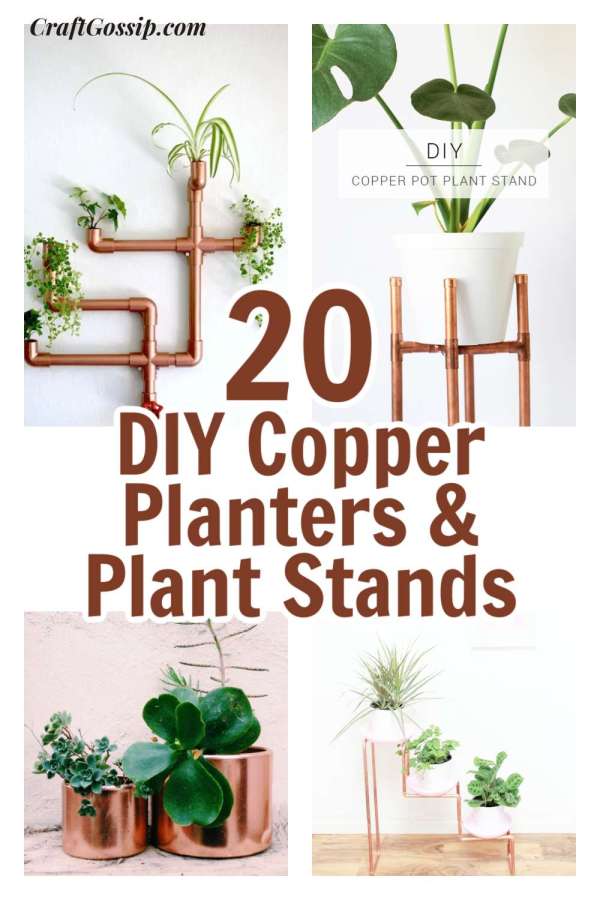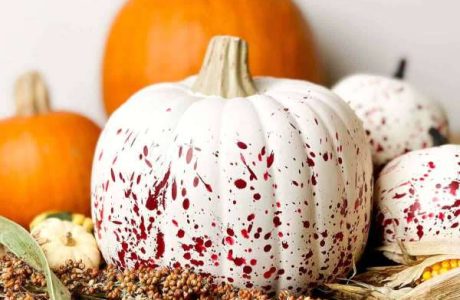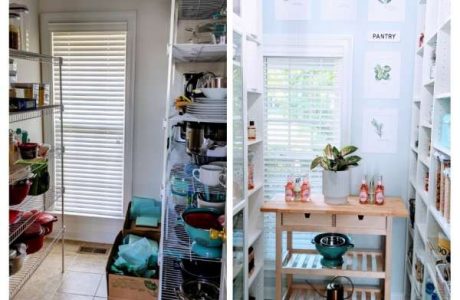
Get ready to embrace the warm glow of copper and add a touch of elegance to your indoor or outdoor gardens with our handpicked collection of 20 DIY plant stands featuring copper accents or finishes. Copper, with its luxurious and timeless appeal, has the power to elevate your greenery to a whole new level of sophistication.
In this unique roundup, we explore the harmonious marriage of the natural world and the lustrous beauty of copper. Whether you have a penchant for sleek, modern designs or you’re drawn to the rustic charm of copper-painted plant stands, these projects offer a perfect blend of style and functionality.
Copper is a versatile and eye-catching material, known for its durability and corrosion resistance. When used as an accent or paint finish for plant stands, it infuses a touch of opulence while harmonizing with the organic beauty of your plants. These DIY creations are not only practical but also a testament to your creativity and design sensibility.
No matter your level of DIY expertise, you’re sure to find inspiration in this collection. From simple, minimalist designs to intricate, eye-catching creations, these copper-themed plant stands have something for every taste. So, if you’re ready to embark on a journey of DIY creativity and style, let these projects guide you toward crafting plant stands that not only support your green companions but also serve as stunning focal points in your living spaces. Prepare to embrace the radiant allure of copper and infuse your surroundings with the timeless beauty of nature and modern design.
Transformed :: Concrete + Copper Plant Stand – Camille Styles
DIY Copper PVC Wall Planter — CraftBits.com
DIY copper plant stands – Sarah Sherman Samuel
Raised Copper Pot Plant Staife
How to Upcycle Straws – DIY Geometric Plant Hanger
Upcycled Copper planters {DIY} | Justina Blakeney
Copper Pipe Pot Plant Holder DIY // Tutorial – Pure Sweet Joy
DIY Copper Air Plant Holder – Lindi & Russ
nd DIY // Tutorial – Pure Sweet Joy
Don’t forget the golden rule of planters: always ensure proper drainage holes. Good drainage is vital to keep your plants healthy and thriving. Without it, roots can become waterlogged, leading to root rot and other issues. So, before you start potting, make sure your planters have adequate drainage. Your plants will thank you!
Upcycled Oxidized Copper Planters – A Beautiful Mess
DIY Hanging Copper Planter – A Bubbly Life
How to Make an Indoor DIY Acacia Wood Plant Stand – Sugar & Cloth Decor
Modern Openwork Cube Planter DIY • Vintage Revivals
Easy Hanging Planter DIY – A Beautiful Mess
DIY FAUX COPPER PLANTERS | Dimples and Tangles
DIY 3 Tiered Copper Planter – A Bubbly L
Copper is an incredible and versatile metal with a rich history.
Here are some fun facts about copper:
Ancient Metal: Copper is one of the oldest metals used by humans, dating back to around 10,000 years ago. It was one of the first metals to be worked into tools, jewelry, and ornaments.
The Copper Age: The widespread use of copper marked the transition from the Stone Age to the Copper Age in human history.
Excellent Conductor: Copper is an exceptional conductor of electricity and heat. It’s used in electrical wiring, motors, and a wide range of electronic devices.
Anti-Microbial Properties: Copper has natural antimicrobial properties. It can help kill bacteria, viruses, and other microorganisms, making it useful in medical applications and in everyday items like doorknobs.
Recyclable: Copper is one of the most recycled metals in the world. It is estimated that more than 80% of all copper ever mined is still in use today.
Alloys: Copper is often alloyed with other metals to create new materials with specific properties. For example, bronze is an alloy of copper and tin, and brass is an alloy of copper and zinc.
Statue of Liberty: The Statue of Liberty, a symbol of freedom in the United States, is made of copper. Over time, the copper has developed its distinctive green patina due to exposure to the elements.
Copper’s Color: Copper has a distinctive reddish-brown color, which makes it easily recognizable. Its name comes from the Latin word “cuprum.”
Coins: Copper has been used to make coins for thousands of years. In the United States, the one-cent coin, commonly called the penny, is primarily made of copper.
Copper in Food: Copper is an essential trace element in the human diet. It plays a vital role in various biological processes, including the formation of red blood cells.
Copper in Architecture: Copper is often used in architectural applications. Its malleability allows it to be shaped into intricate details, making it a favorite for roof coverings, domes, and decorative elements.
Copper’s Use in Brewing: Many breweries use copper kettles for boiling the wort during the beer-making process. Copper kettles are valued for their even heat distribution.
Copper in Art: Copper has been used by artists for centuries. It can be etched, engraved, and patinated to create beautiful works of art.
Tarnish and Patina: When exposed to the air, copper forms a layer of tarnish or patina. This layer not only adds character to the metal’s appearance but also protects it from further corrosion.
Copper’s history and versatility make it a fascinating material with a wide range of applications and a significant role in human civilization.




